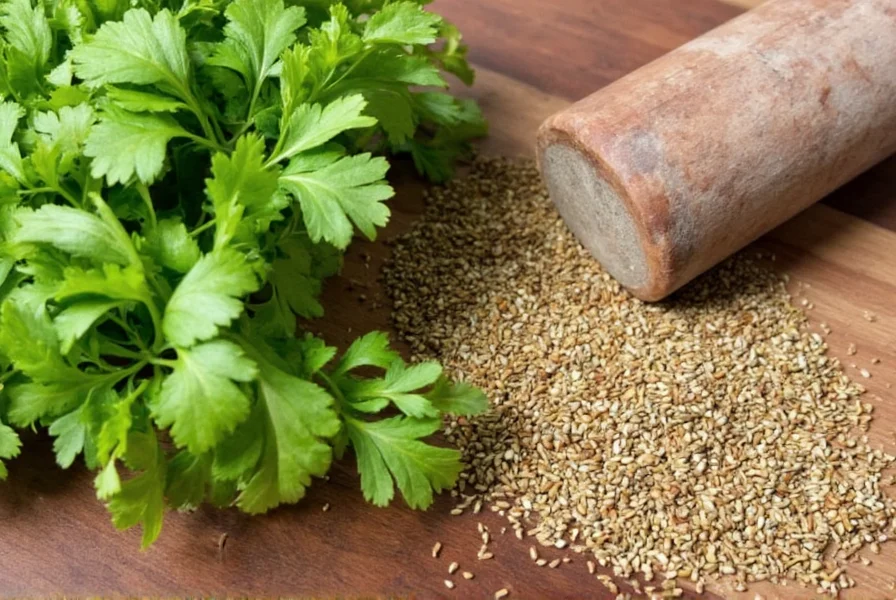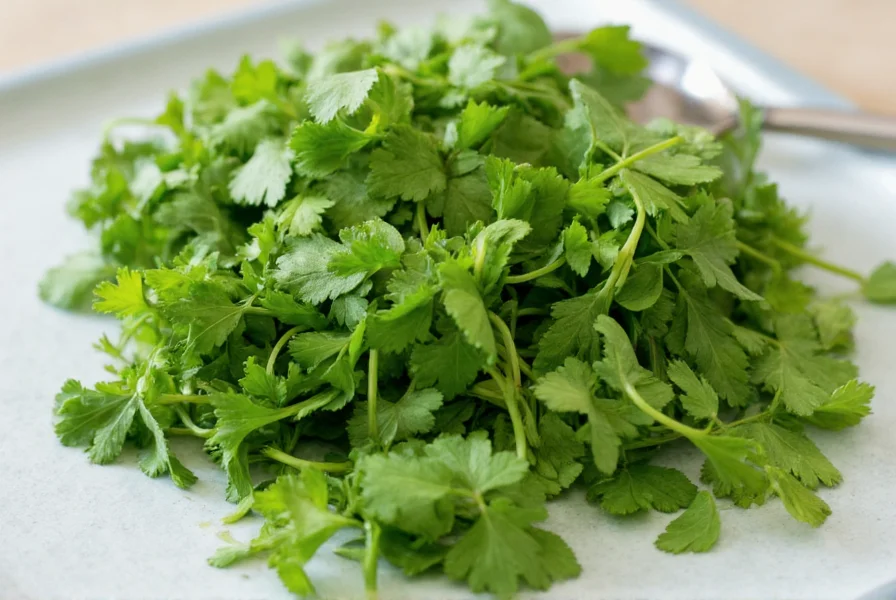Understanding the distinction between cilantro and coriander is essential for anyone who enjoys international cuisine or grows herbs. Many home cooks and professional chefs encounter confusion when recipes call for one term or the other, especially when traveling or exploring global cookbooks. This comprehensive guide will clarify the botanical reality, regional naming differences, and practical culinary applications of this versatile herb-spice duo.
Botanical Facts: One Plant, Multiple Names
The Coriandrum sativum plant produces both the leafy greens we call cilantro and the round seeds known as coriander. This annual herb belongs to the Apiaceae family, which includes parsley, carrots, and celery. The entire plant is edible, but different cultures have developed distinct names for its various parts based on historical usage patterns.

Regional Terminology Explained
The naming confusion stems primarily from geographical differences:
| Region | Leaves/Stems | Seeds |
|---|---|---|
| United States and Canada | Cilantro | Coriander |
| United Kingdom, Australia, India | Coriander (leaves) | Coriander (seeds) |
| Spain, Latin America | Cilantro | Coriandros or Cilantrillo |
| France | Cilantro or Coriandre | Coriandre |
In most English-speaking countries outside North America, the entire plant is called "coriander," with context determining whether leaves or seeds are referenced. American English adopted the Spanish word "cilantro" specifically for the leaves, while retaining "coriander" for the seeds. This linguistic divergence explains why many international recipes seem contradictory when specifying ingredients.
Physical Characteristics and Identification
Recognizing the difference between cilantro leaves and coriander seeds is straightforward once you know what to look for:
- Cilantro (fresh leaves): Bright green, lacy, deeply lobed leaves with a distinctive aroma often described as citrusy or soapy (to those with the OR6A2 gene)
- Coriander seeds: Small, round, tan to brown seeds with a warm, nutty, slightly citrus flavor when ground
- Coriander roots: Often used in Thai cuisine, with a more intense flavor than the leaves
- Coriander flowers: Delicate white blossoms that eventually produce the seeds
Culinary Applications and Flavor Profiles
The flavor difference between cilantro and coriander is dramatic, making them non-interchangeable in most recipes:
Cilantro (fresh leaves): Offers a bright, citrusy, sometimes peppery flavor that works best added at the end of cooking or as a garnish. Essential in salsas, guacamole, chutneys, and Southeast Asian dishes. Heat destroys its delicate flavor compounds, so it's typically used raw.
Coriander seeds: Provide a warm, nutty, slightly sweet flavor with citrus undertones. Used whole or ground in spice blends, pickling, baking, and curry powders. The seeds benefit from toasting before use to enhance their aromatic qualities.

Substitution Guidance for Home Cooks
When you don't have the exact ingredient called for in a recipe:
- Replacing fresh cilantro: Try flat-leaf parsley with a squeeze of lime juice, or culantro (a different but similar-tasting herb)
- Replacing coriander seeds: Use cumin or caraway seeds in small amounts, though the flavor profile will differ significantly
- Important note: Dried cilantro does not make a suitable substitute for fresh cilantro, as it loses most of its distinctive flavor
Common Misconceptions Clarified
Several persistent myths surround cilantro and coriander:
- Myth: Cilantro and coriander are different plants
- Fact: They come from the same Coriandrum sativum plant
- Myth: Coriander always refers to the seeds
- Fact: Outside North America, "coriander" commonly refers to the leaves
- Myth: Cilantro and coriander taste similar
- Fact: The fresh leaves have a bright, citrus flavor while the seeds offer warm, nutty notes
Practical Tips for Gardeners and Shoppers
Whether you're growing your own or selecting at the market:
- Harvest cilantro leaves when the plant is 6-8 inches tall for best flavor
- Allow some plants to flower and set seed if you want to harvest coriander
- Fresh cilantro should look vibrant green with no yellowing or wilting
- Coriander seeds should be uniform in color with no musty smell
- Store fresh cilantro stems in water like flowers, with a plastic bag loosely covering the leaves
Understanding the Genetic Component of Cilantro Preference
Approximately 21% of the population carries a genetic variation (OR6A2) that causes cilantro to taste like soap. This genetic predisposition explains why some people strongly dislike cilantro while others enjoy it. The same genetic factor doesn't affect perception of coriander seeds, which have a completely different flavor profile.











 浙公网安备
33010002000092号
浙公网安备
33010002000092号 浙B2-20120091-4
浙B2-20120091-4